Most people think about pine trees and other evergreens around the holidays as they’re prepping garlands and wreaths for décor. But evergreens are useful throughout the year, providing habitat for fireflies and other wildlife, privacy for our gardens, and even resin for incense making. Even better, native conifers have been used for centuries for medicinal purposes, and many of them are edible too!

White pine and many other conifers are rich in vitamin C, and brewing their needles into tea was once used to combat scurvy. Pine nuts, a common ingredient in pesto, are also produced from evergreen trees like pinyon pine and stone pine. But if you’re into foraging or you’ve visited a boutique grocery lately, you probably know that spruce tips are edible as well!
In recent years, spruce tip jelly has taken the culinary world by storm, and it’s an intriguing condiment to use on toast, bagels, or charcuterie boards. But there’s no reason to break the bank buying expensive spruce tip jelly from artisanal markets when you can make your own out of foraged spruce tips right from your yard!
Jump to:
- Can you make jelly out of any evergreen?
- How to forage for spruce tips
- How to make spruce tip jelly
- The process
- 1. Gather the spruce tips.
- 2. Process the spruce tips.
- 3. Make a tea.
- 4. Strain out the spruce tips.
- 5. Add citrus.
- 6. Boil.
- 7. Add pectin.
- 8. Add sugar.
- 9. Heat up the mixture.
- 10. Pour your jelly into jars.
- 11. Let the spruce tip jelly rest.
- 12. (Optional) Can your homemade jelly.
- How to use spruce tip jelly
- Frequently asked questions
- Summary
Can you make jelly out of any evergreen?
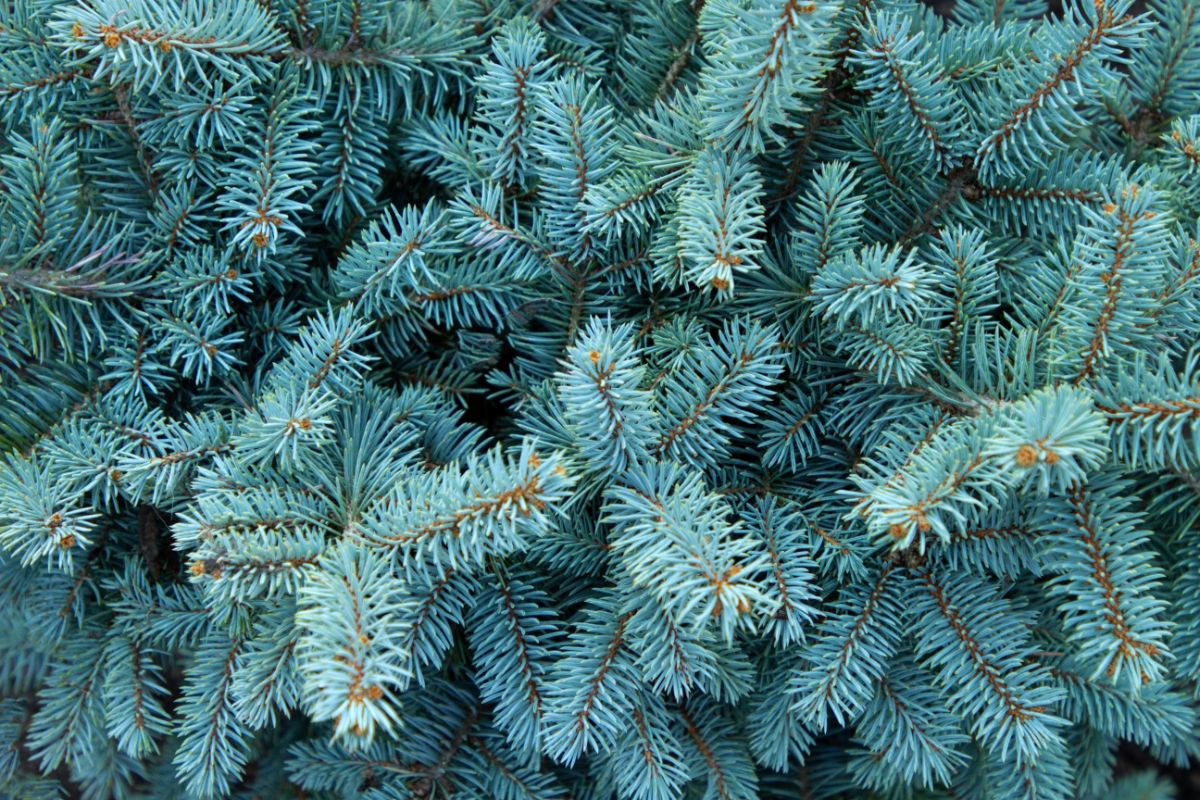
Most common native conifers have edible needles, and they can be used for jelly-making, but there are a few exceptions. Most notably, while yew trees aren’t natives, they are common landscape plants, but they are severely toxic if ingested. It’s important to know what yew trees look like so you can avoid them while foraging.
Some other conifers, like cypress and cedars, are also best avoided when gathering ingredients for jelly. While these plants are sometimes used medicinally, they aren’t considered edible. Additionally, Norfolk Island pines, ponderosa pines, Australian pines, and a few other conifer plants contain toxic compounds that aren’t good for eating.
But while there are some evergreens that you shouldn’t forage from, some of the best conifers for jelly-making include:
- Blue spruce
- White spruce
- Norway spruce
- White pine
- Pitch pine
- Douglas fir
- Fraser fir
- Balsam fir
These trees aren’t just good for jelly-making either! You can also use them to make other edibles too, including seasoned salts, baked goods, syrups and sugars, and herbal teas.
Like any other foraged ingredient, it’s essential that you know how to identify plants properly before picking ingredients. If you’re new to foraging, you may want to check out plant identification books or attend a local plant walk with an experienced forager who will help you gain confidence with foraging
How to forage for spruce tips
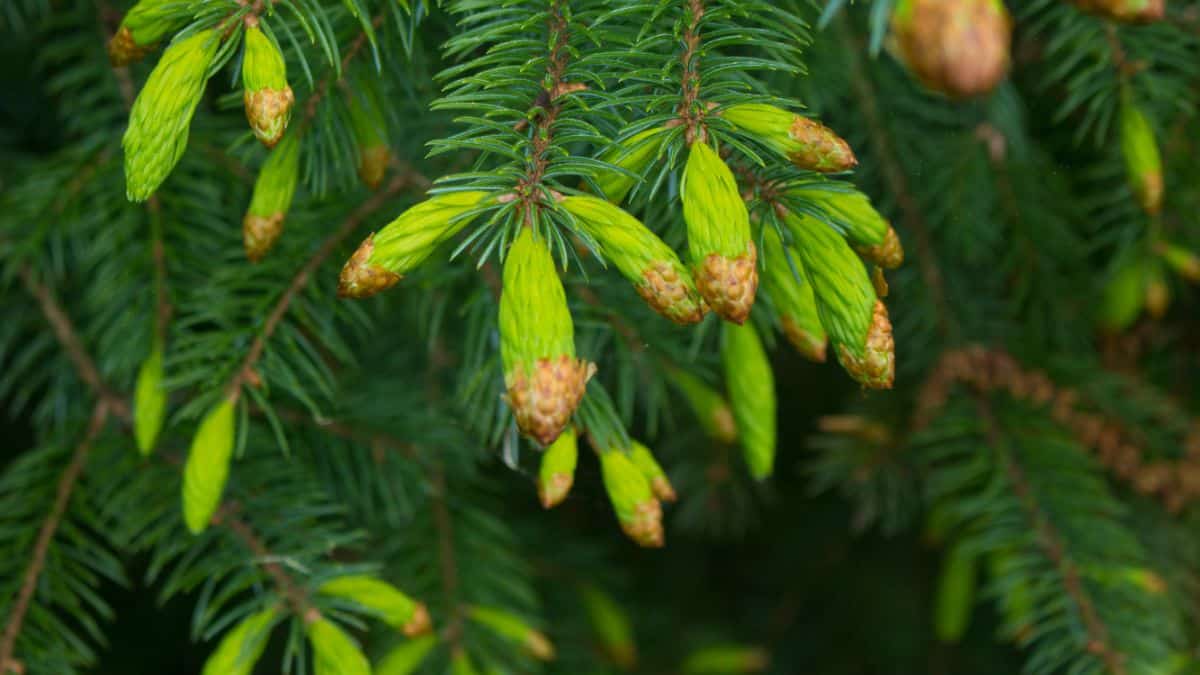
Spruce trees are often confused with fir and pine trees and other conifers, which is why it’s a good idea to invest in a quality tree identification book before foraging for spruce tips. A few helpful tips to keep in mind when identifying spruce trees are:
- Spruce trees come in different colors, but blue spruce have pronounced bluish-green needles that make them stand out in a wooded landscape. That said, color is not a reliable indicator of plant type, as tree colors can often vary depending on environmental conditions and other factors.
- Unlike pines, spruce needles grow individually from the stem. Pine tree needles grow in clusters.
- Pine tree needles often have papery sheaths at the base of the needles. Spruce needles don’t have these structures.
- Pine tree needles are usually longer than spruce needles.
- Spruce needles are sharp and have square edges, while fir needles are flat. If you’re having a hard time distinguishing the shape of an evergreen needle, try rolling it between your fingers. This usually makes it much easier to feel the edges on spruce needles!
With the basics of spruce identification in mind, you’re just about ready to head out into the woods (or your yard) to start harvesting spruce tips. But first, it’s important to understand a few essentials of foraging.
When foraging, it’s always important to know your environment and only gather ingredients from areas where it’s permitted. Don’t forage on private property unless you’ve been given the okay. Also, don’t forage from areas that may have been sprayed with pesticides or herbicides or in areas where trees may have been exposed to other unsavory additives.
Additionally, since spruce tips are the growing parts of the tree, you don’t want to overdo it when foraging, as you can stunt the tree’s growth or cause undue stress to the plant. For this reason, never harvest more than 20% of the spruce tips from a single tree and only harvest tips from established plants (not young trees). Finally, don’t pick tips off the very top of trees, as this can cause them to stop growing.
Also, while there are no poisonous spruce trees, different spruce varieties have different flavors, and some spruce tips taste more bitter than others. So, you may want to try out spruce tips as you forage to find the flavors you like. And don’t forget to bring along a bottle of water to wash out your mouth if you happen to get a particularly bitter spruce tip!
The best time of the year to harvest spruce tips is in spring or early summer. At this time of the year, spruce trees are actively growing, and their bright, growing tips are easy to spot. However, you can continue to harvest spruce tips later in the season as long as they haven’t begun to stiffen.
To gather spruce tips, all you need to do is pinch off the bright green tips with your fingers. Foraging spruce tips is essentially like pruning the plant, so don’t harvest all of the tips from one side of the tree. Instead, walk around the spruce tree and gather a few tips here and there so you don’t accidentally reshape the entire tree!
After you’ve gathered all the tips you need in a basket or Ziploc baggy, you’re ready to bring them home for jelly-making!
How to make spruce tip jelly
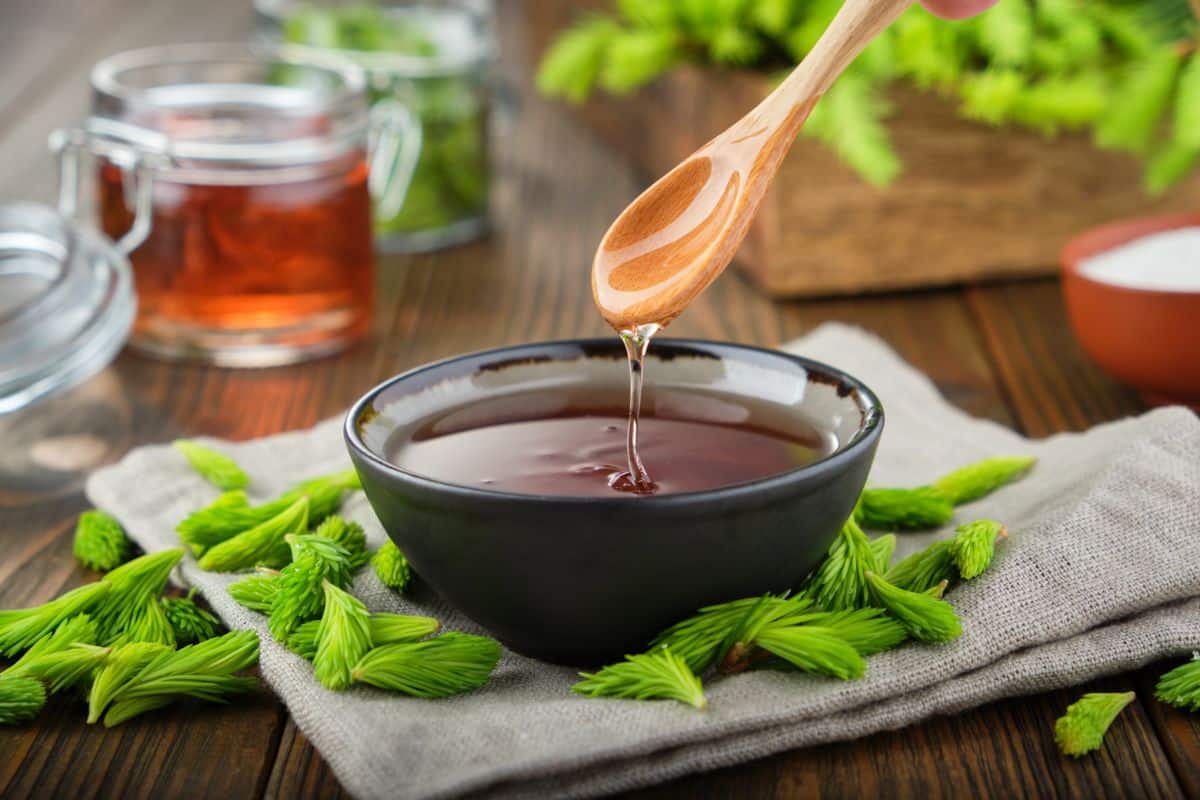
If you’ve ever made jelly before, spruce tip jelly is really no different. You essentially make a tea, add pectin, sugar, and heat and then allow the jelly to set. However, if you’re new to jelly making, the simple steps below will help you make the tastiest spruce tip jelly that will rival any jelly you can find at even the fanciest grocery stores.
What you’ll need:
- About 2 to 4 cups of fresh spruce tips
- Water
- 2 tablespoons of lemon or lime juice
- 1 box of pectin (low sugar or regular will work)
- 1 to 4 cups of sugar (depending on the type of pectin you’re using)
- 4 half-pint canning jars
- Cooking pot
- Kitchen knife
- Cheesecloth or fine mesh strainer
- Ladle
- Canning jar funnel
The process
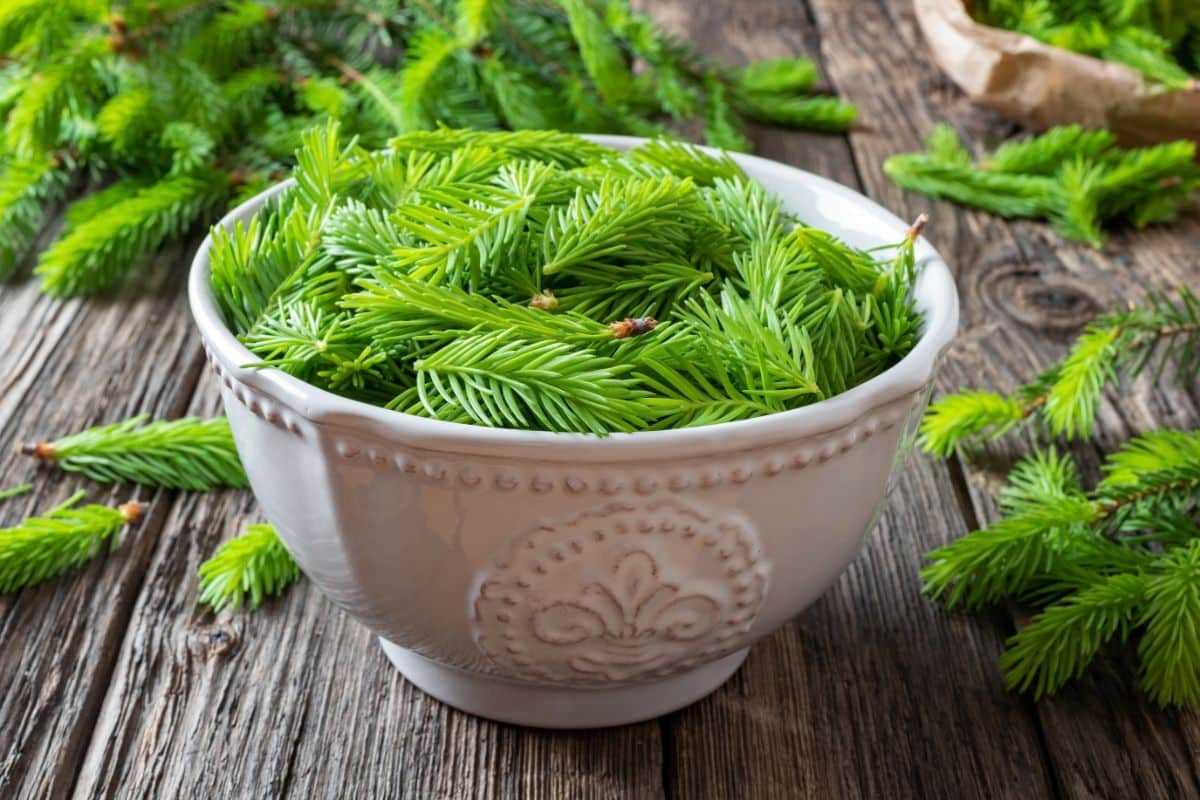
Spruce tip jelly isn’t difficult to make. Just follow along with the simple steps below, and you’ll be making jelly like a pro in no time!
1. Gather the spruce tips.
Obviously, the first step to making spruce tip jelly is to gather your spruce tips! How many spruce tips you’ll need will depend on how much jelly you’d like to make.
In general, about ½ to 1 cup of spruce tips are needed for every half pint of jelly you’d like to make. If you want a stronger flavored jelly, use a full cup of spruce tips.
2. Process the spruce tips.
After foraging for your spruce tips, check the spruce tips over for any dirt or debris and give them a good rinse. Then chop the spruce tips with a kitchen knife to release the volatile oils in the needles, which will produce a more flavorful jelly.
3. Make a tea.
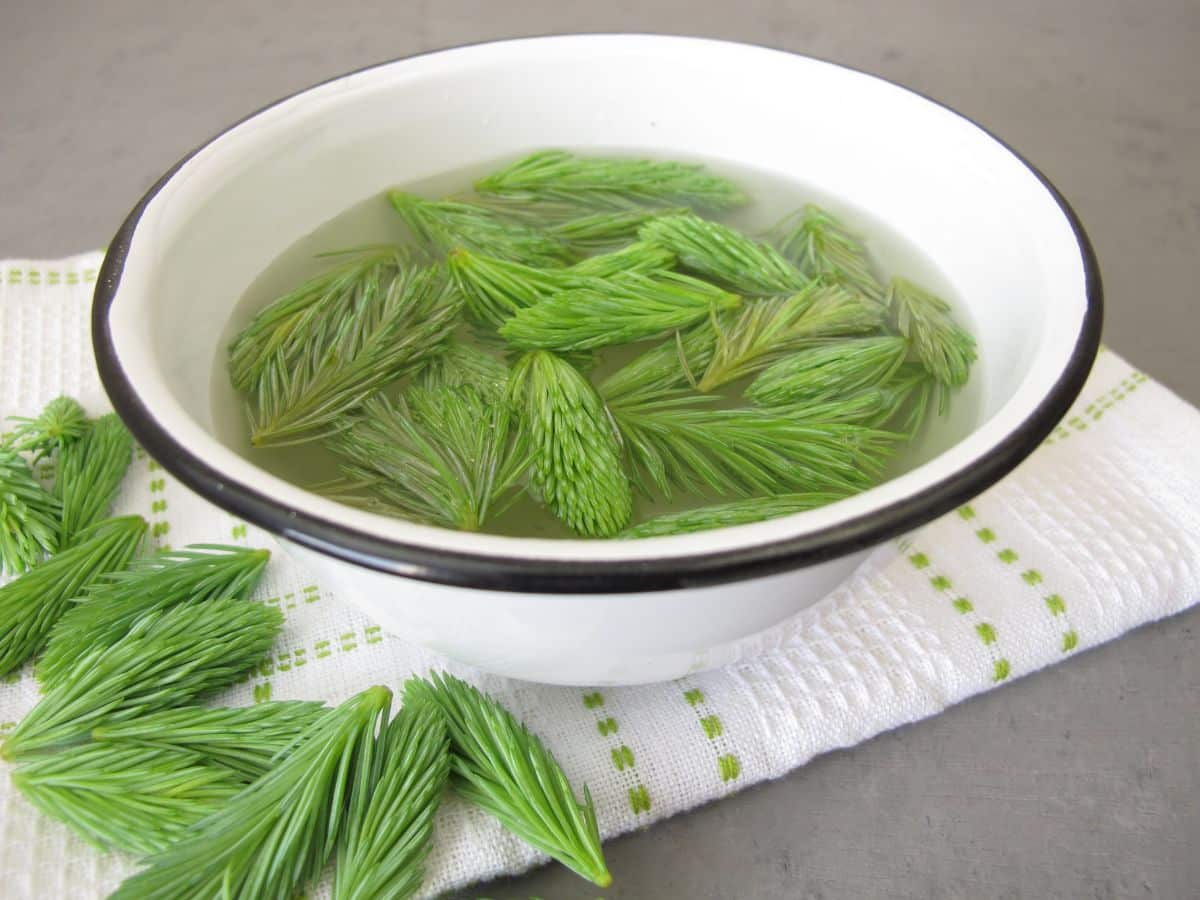
Next, place your spruce tips in a cooking pot with about 4 cups of water. Then bring the pot to a boil and allow the spruce tips to cook for about 3 minutes.
Once the spruce tips are heated through, remove the pot from the stove and allow the water to cool to room temperature. Alternatively, you can also place the pot in your fridge and allow it to steep overnight. The longer you let your spruce tip tea brew, the more intense the flavors will be!
4. Strain out the spruce tips.
When your spruce tip tea has steeped for as long as you like, pour it through a fine mesh strainer or cheesecloth to remove the spruce tips and any other debris. Place the spent spruce tips in your composter so that nothing goes to waste!
5. Add citrus.
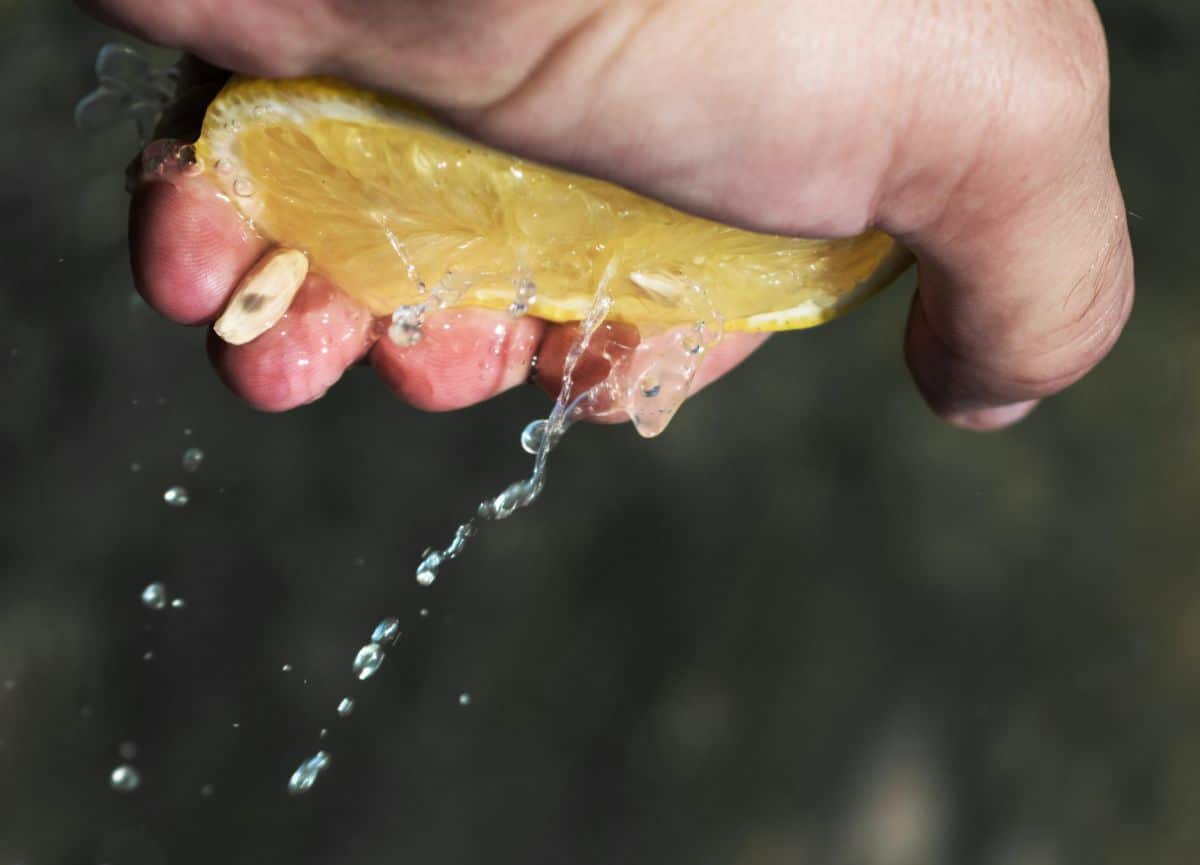
Add in two tablespoons of lemon or lime juice and mix well. This citrus juice can either come from fresh citrus or bottled lemon or lime juice.
6. Boil.
Now, bring the spruce tip tea back to a boil.
7. Add pectin.
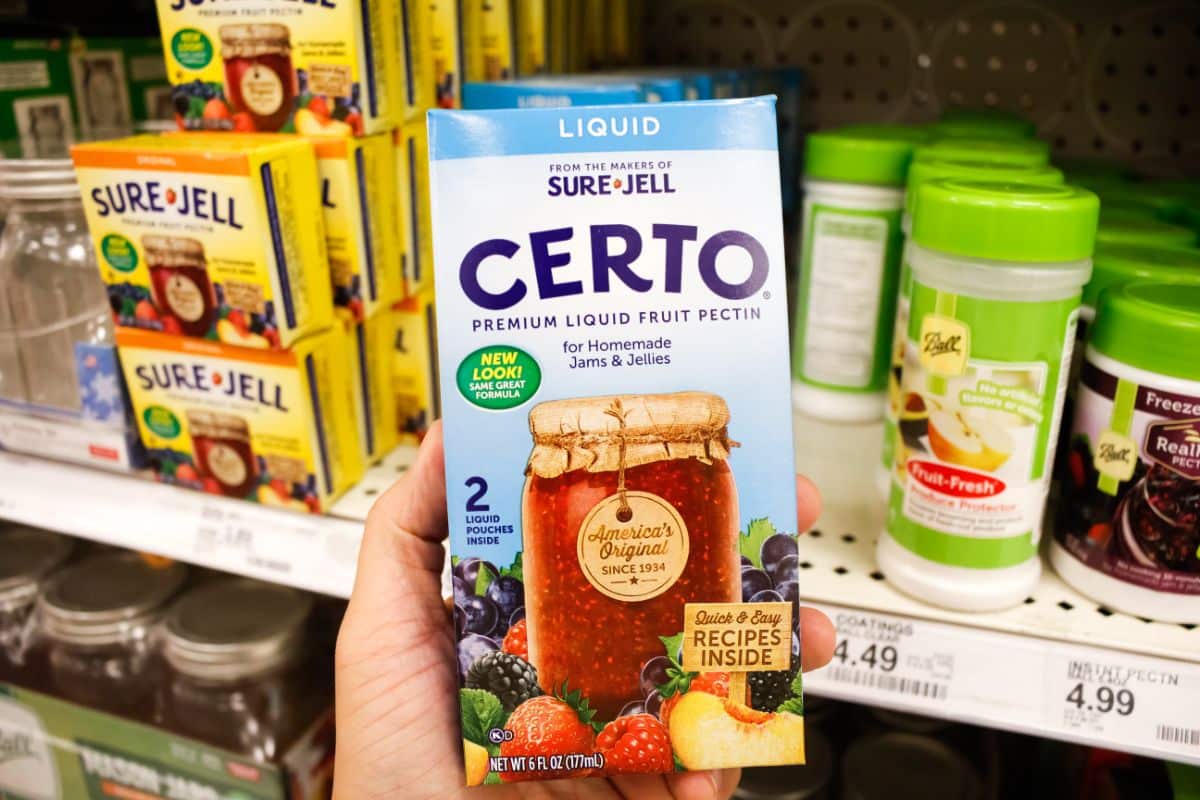
When the water is boiling, slowly stir in your pectin. Depending on your tastes, you can use either low-sugar or regular pectin.
8. Add sugar.
Allow the mixture to boil for 1 minute while continuing to stir. After the pectin is blended in, mix in your sugar. The type of pectin you use will dictate how much sugar you’ll need, so follow the instructions on your pectin package to decide how much sugar to add.
When you add the sugar, go slow and stir the sugar in as you go. Keep stirring until the sugar is completely dissolved.
9. Heat up the mixture.
Then, boil the mixture at a hard boil for 1 to 2 minutes. Don’t forget to stir!
10. Pour your jelly into jars.
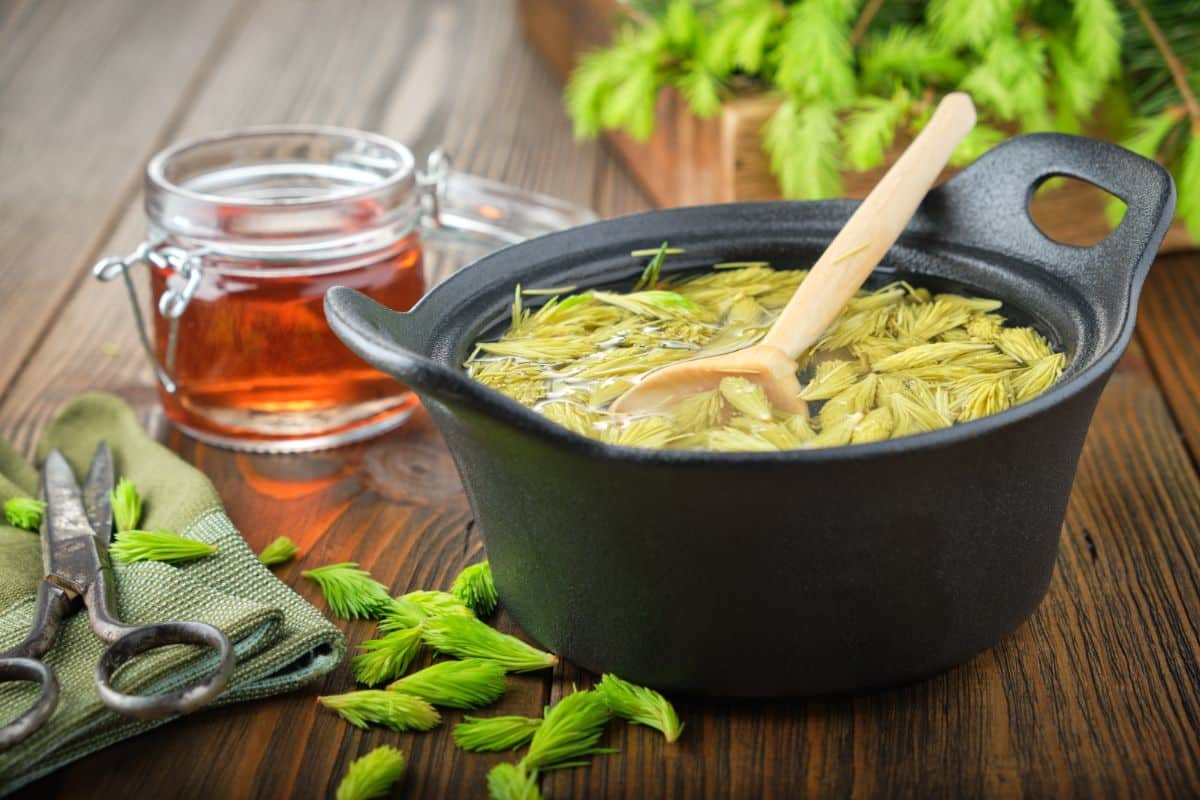
After your jelly has cooked for 1 to 2 minutes, remove the pot from the stove. Then carefully pour or ladle the liquid into clean canning jars, leaving ¼” of headspace. Be careful while you pour since the jelly will be hot!
Wipe the tops of the jars off with a clean towel, and then screw on your canning lids.
Tip: If you want a more colorful jelly, you can mix a drop or two of green food coloring into the jelly before adding it to your jars.
11. Let the spruce tip jelly rest.
If you plan on using your spruce tip jelly right away, slip your jars into your fridge and allow them to set for about 2 to 4 hours. This helps the jelly thicken up and become less liquid.
Fresh spruce tip jelly can last in your fridge for about 1 month. For longer-term storage, you can also freeze your jelly, but be sure to remove the canning lids before you put the cans in the freezer to keep the glass from breaking. Once frozen, you can add the canning lids back on your jars and keep your homemade spruce tip jelly in your freezer for about 6 months.
12. (Optional) Can your homemade jelly.
For longer-term storage, you can also can your spruce tip jelly using water bath canning methods and process the cans for 10 to 15 minutes, depending on your elevation. If you go this route, remember to follow proper canning safety protocols.
Note: Once opened, canned jelly should always be stored in the fridge.
How to use spruce tip jelly
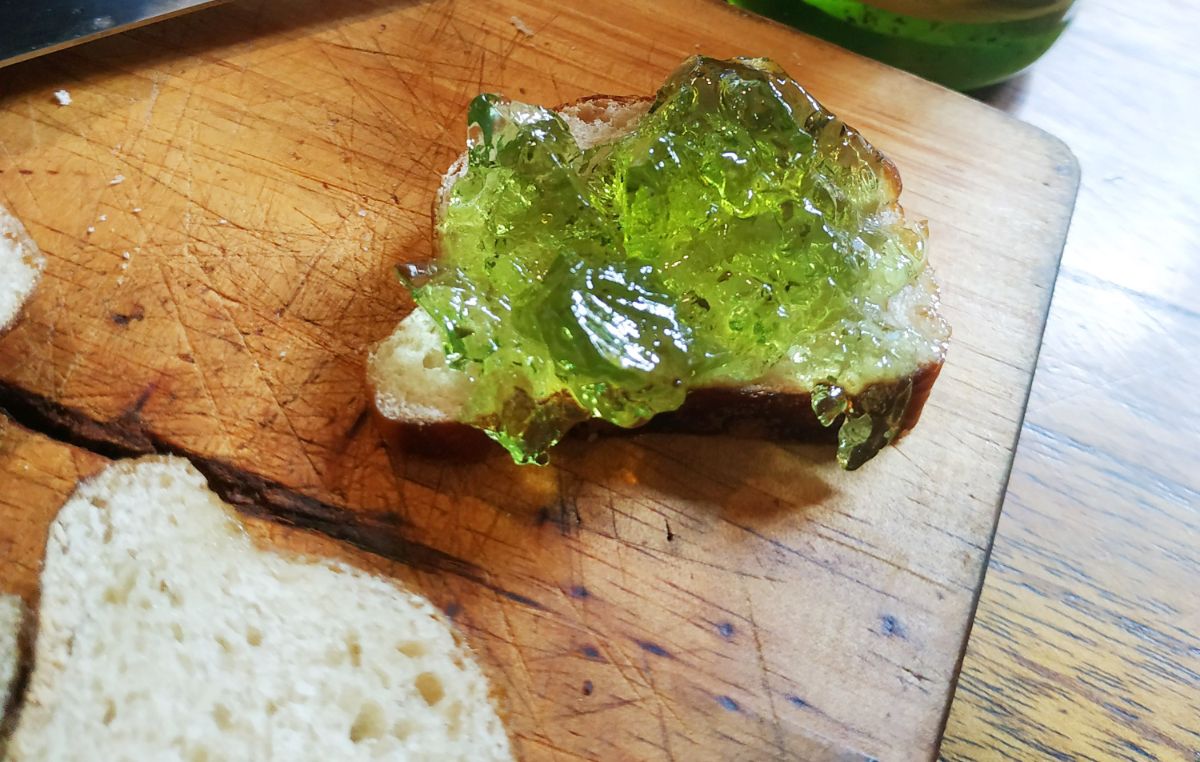
Spruce tip jelly can be used pretty much anywhere you’d use mint or fruit jellies. Put it on crackers or toast for a snack, or add it to charcuterie boards to take your next party to another level.
If you like making homemade cocktails, try stirring some spruce tip jelly into your next drink, or use it on top of muffins, scones, or other baked goods. This jelly pairs beautifully with an assortment of cheeses, and it can even be used as a condiment for roasted meats and veggies.
Around the holidays, jars of homemade spruce tip jelly make fantastic presents, and they’re also perfect hostess gifts for the foodie in your life. Just package a jar of spruce tip jelly up with your favorite herbal tea, some crackers, and a good, hard cheese. Yum!
Frequently asked questions
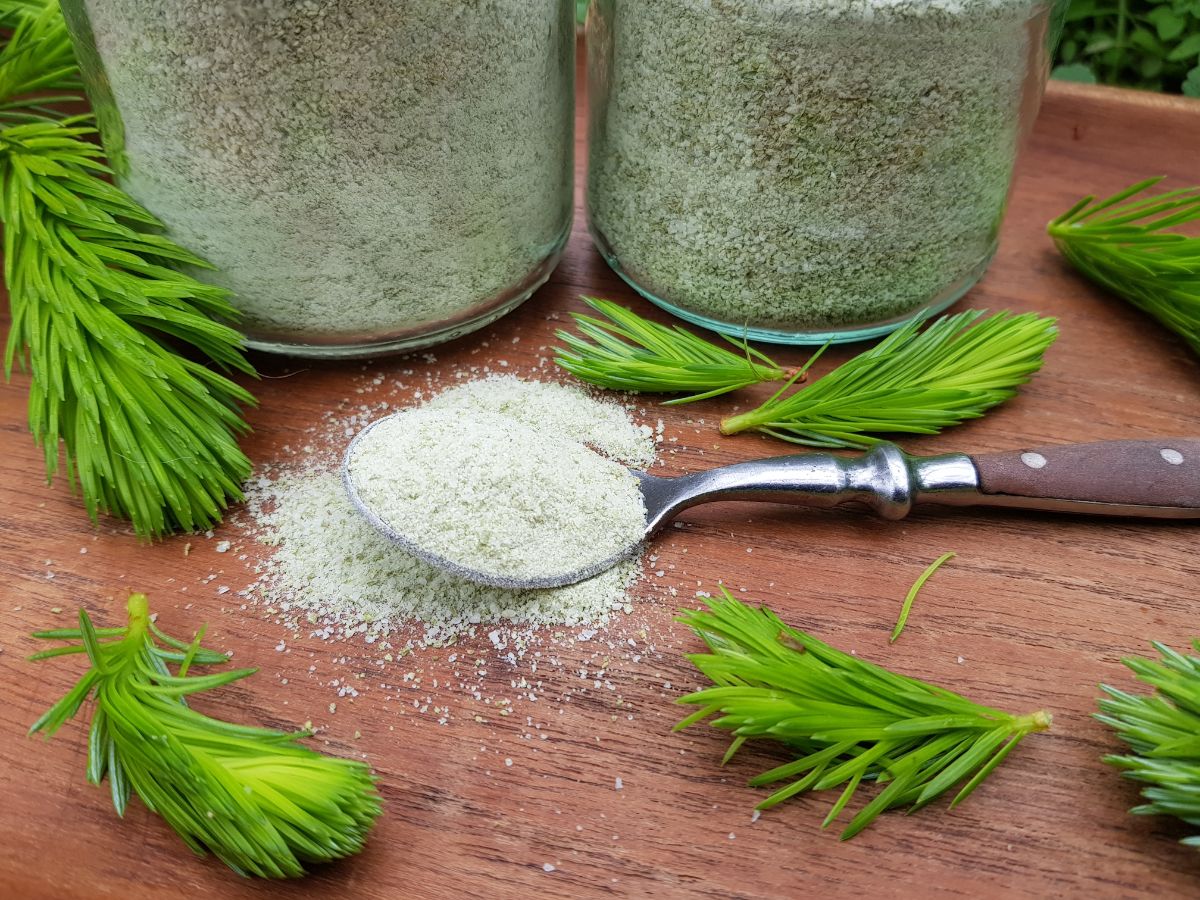
Spruce tip jelly has a sweet and complex flavor with notes of citrus and resin. A perfect complement to sweet and savory dishes, this jelly works particularly well with cheese, desserts, and toast.
All spruce tips are safe to eat, but different spruces have different flavors. Some foragers prefer the taste of certain varieties of spruce over others, and blue spruce is known to have the most intense flavor.
Spruce tips can be eaten raw right off the tree, or they can be mixed into fresh salads. You can also dehydrate, ferment, or pickle spruce tips, or you can mix them into a variety of baked goods or condiments like spruce tip vinegar or spruce tip salt.
Because they’re delicious! But beyond their flavor, foraging for spruce tips is a great way to add more fresh veggies to your diet and save on your grocery bill too. After all, foraged spruce tips are free!
Fresh spruce tips can be brewed into hot teas as is, but you can also dehydrate spruce tips for tea and store them even longer. Spruce tips can be dried in the sun on screens, or you can place them in a food dehydrator or oven at a very low temperature until they’re completely dry and crumble easily between your fingers.
Spruce tips can be pickled in vinegar, just like cucumbers and other pickled treats. Once preserved in this manner, pickled spruce tips can be used like pickles or capers to accentuate dishes. Or you can gobble them up on their own as a snack because they are just that tasty!
Summary
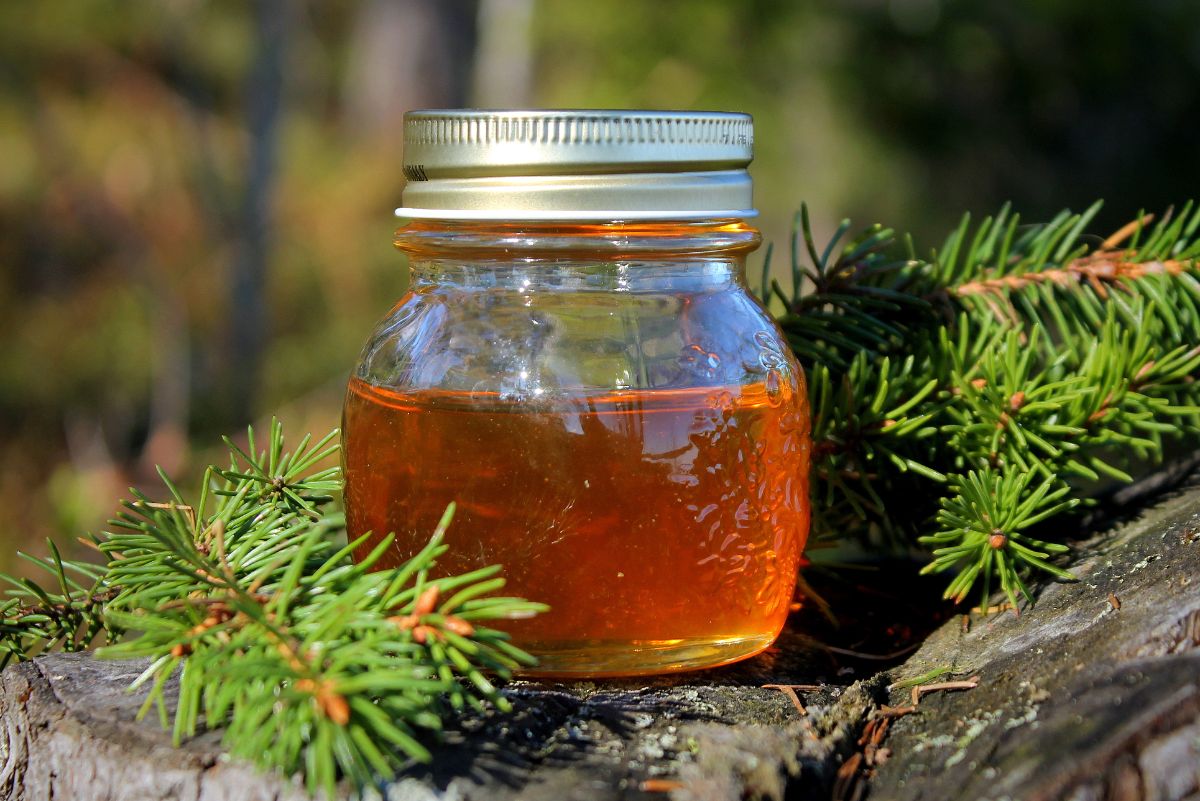
Making your own spruce tip jelly is super simple to do, and it’s a great way to incorporate more wild foods into your diet. Foraging for wild foods like spruce tips encourages us to get outside in nature and observe plants with a more careful eye. Plus, making your own jellies is fun, and once you make spruce tip jelly once, you’ll be well on your way to making other homemade jellies like mint jelly, green tea jelly, or Earl Grey tea jelly, which use very similar recipes!
We hope you enjoyed this article! If you like the idea of foraging for your own food, be sure to check out our guide on the best common weeds to forage in your backyard or learn how to make acorn flour from scratch right here.

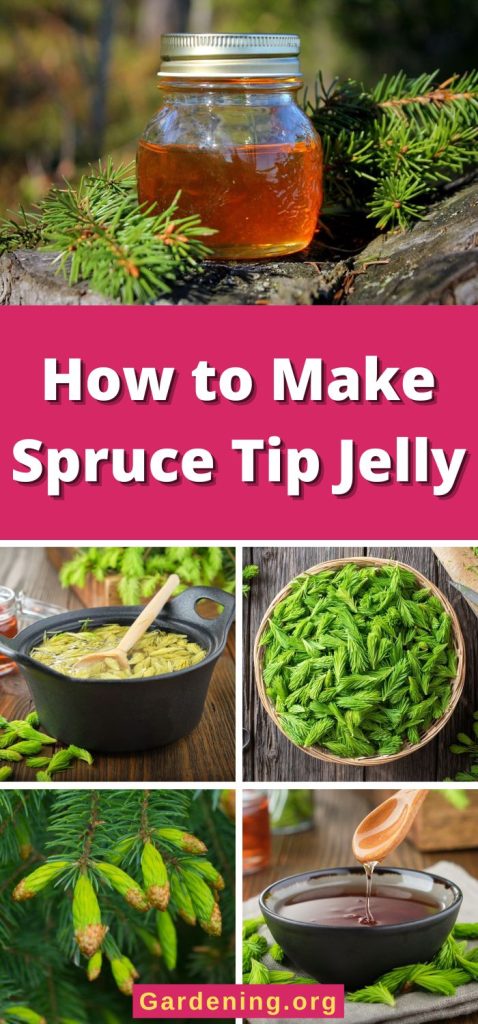
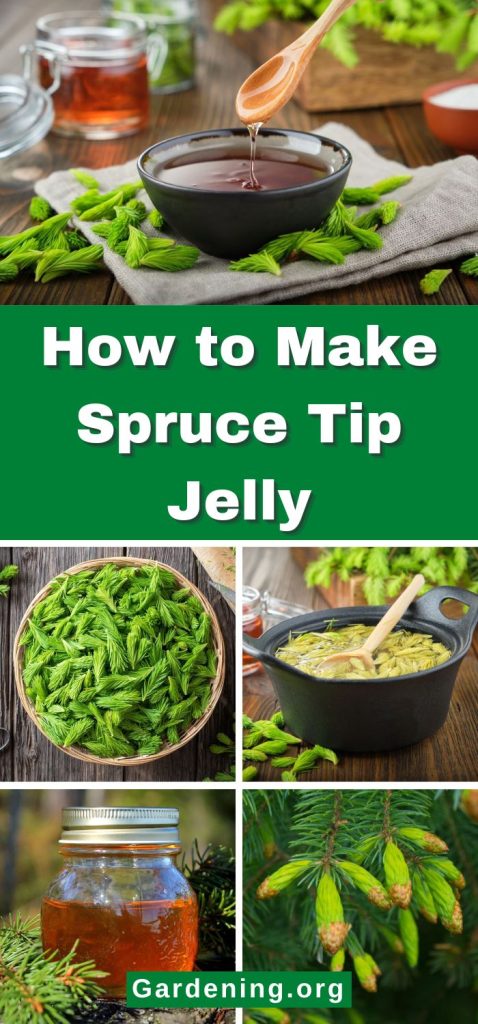

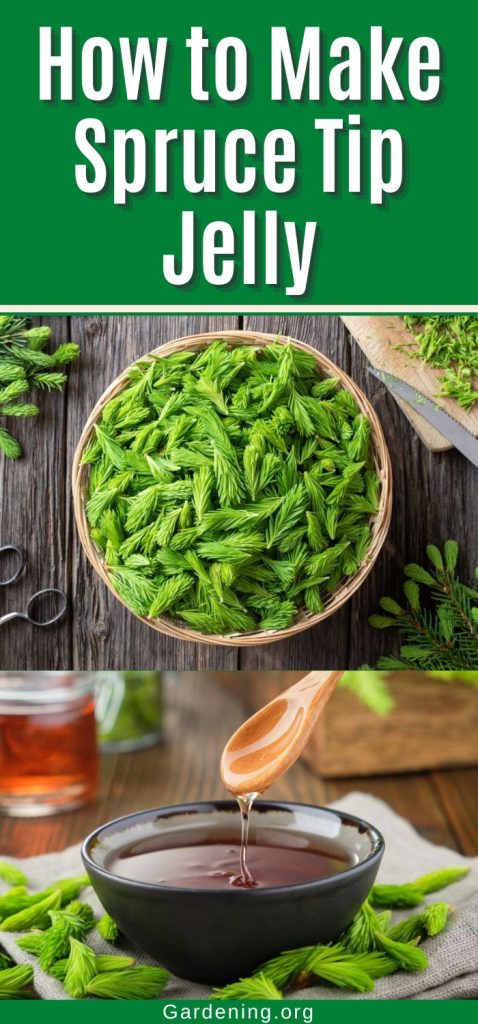
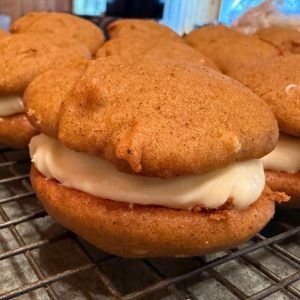

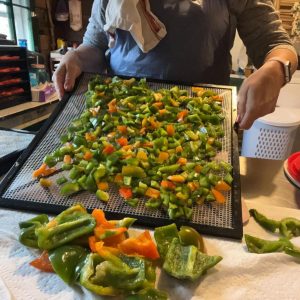
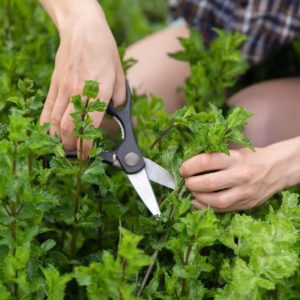
Leave a Reply